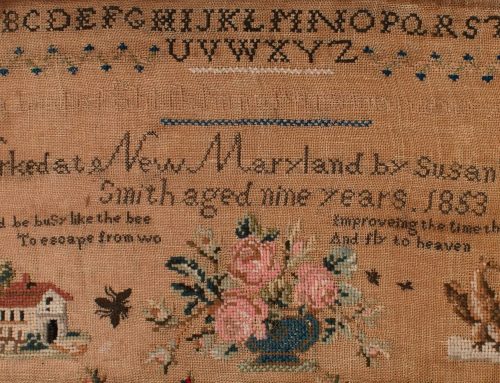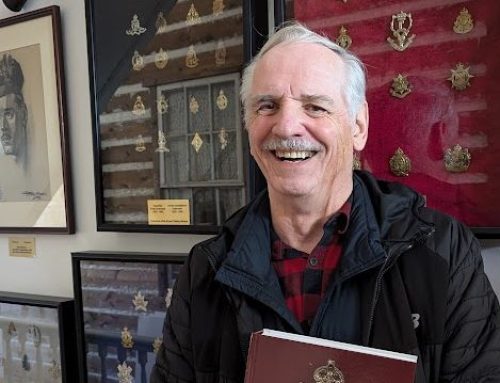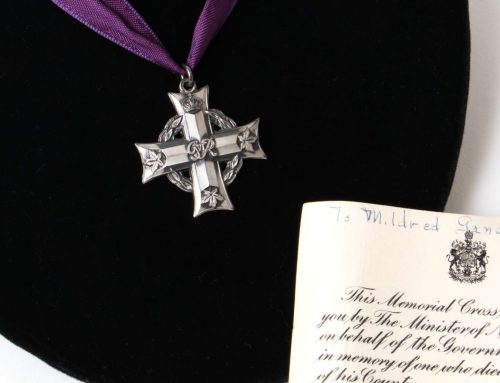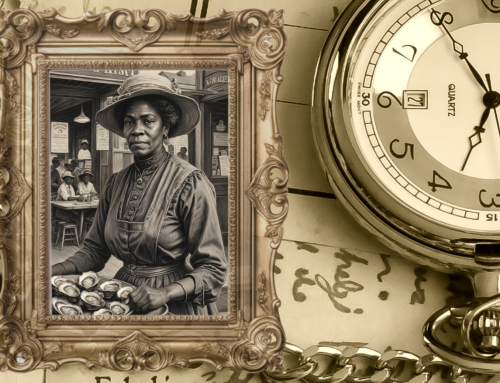
Dr Hebb is a graduate of King’s College (BA in history) and Dalhousie (MA in Classics) in Halifax. He secured a PhD in Theology and Church History from the Univ. of Wales in 2004.
The fascinating Black history of New Brunswick’s only non-segregated Anglican church will be the subject of a presentation by Dr. Ross Hebb at the York Sunbury Historical Society Speaker Series in Fredericton.
The FREE event takes place at 7 pm on Thursday, November 21 at Government House, 51 Woodstock Road. All are welcome to attend and refreshments will be served.
Dr. Ross Hebb is the minister of St. Peter’s Anglican Church on Woodstock Road in Fredericton. He explains the Church is of historical significance not only due to its connection with Captain Charles Rainsford, the hero of the famous winter march of the 104th Regiment of Foot in 1813, but also due to the story of its Black Parishioners.
“Members of the local Black community constructed the church building, joined its ranks as adult members and then fully participated in its life,” says Dr. Hebb. “Blacks worshipped weekly in a non-segregated congregation, sang in its well-known choir, acted as sextons, and also consistently served on its Vestry.”
What is perhaps even more telling for the 19th century is that Black and white were buried together in the adjoining cemetery, says Hebb. “To date, this is the only known instance, for this time period, of mixed burials in the Fredericton area, and in all of New Brunswick, and perhaps even the entire Maritimes.”
Dr Hebb is a graduate of King’s College (BA in history) and Dalhousie (MA in Classics) in Halifax. He secured a PhD in Theology and Church History from the Univ. of Wales in 2004. His published dissertation “The Church of England in Loyalist New Brunswick: 1783-1825” was followed by another peer reviewed work in 2010 “Samuel Seabury and Charles Inglis; Two Bishops, Two Churches” which examined the nascent episcopacies of America’s and Canada’s first Anglican Bishops.
The York Sunbury Historical Society Speaker Series is made possible with the support of the Office of the Honourable Brenda Murphy, Lieutenant Governor of New Brunswick.






The black population (60 people listed in the 1851) of St. Andrews N.B. were also buried together in the town’s Anglican cemetery.
In honour of Black History Month, a selection of Dave Sullivan’s Historical Scrapbook is presented as a brief history of the people of colour of St. Andrews, Charlotte County, New Brunswick. During its early years, St. Andrews (SA) had a black population from its founding in 1783, but very little is known about these people. There was no local newspaper until 1818, and no local news in these papers, hardly, until 1840. Also, church records of marriages, births and deaths do not predate 1818, so the very early history of these people is almost non-existent. Based on the authority of William Spray, New Brunswick historian and the author of an excellent small book titled Blacks of New Brunswick, SA had slaves, right along with the larger cities such as Saint John and Fredericton, adding that there was probably no slavery left in New Brunswick by 1810 or so. Interestingly, SA had the only black population in Charlotte County; it numbered about 60 in the first census of 1851. Who these blacks were, what percentage were slaves and what percentage servant, can only be speculated from church accounts of deaths, but it seems fairly certain that the Stewarts were an early black family in SA, as the Anglican Church burial notices give several black persons by this name as having died in the first decades of the nineteenth century at an advanced age. Also, the census of 1851 notes at least three sizable black families by this name living in the Town.
Briefly, the main black families of SA were the Stewarts, Alexanders, Bannisters and Norris’s. A legendary black woman of the town named “Black Violet” (Violet Tucker) was said to remember being taken away from her African village. She probably came to SA in 1798 or so with Colonel Christopher Hatch, who had been stationed in Saint John until that date. She married Rueben Alexander, had many children. Violet and her husband owned land for a time. The Bannister family is notable for having produced a distinguished painter, Edward Bannister, who shipped out of SA as a boy and made a name for himself in Rhode Island, winning a prestigious prize at the first annual Philadelphia Exhibition for his painting “Under the Oaks.” The Norris family was actually related to the Stewarts through a patriarch named Moses Stewart, a poor farmer along Cedar Lane, then called Slabtown (defined by the slabwood (the scrap wood from cut logs) stacked outside people’s homes used for cooking and heat) grand-daughter Maria married a freed Maryland slave by the name of Charles Norris and raised a family here. The family is most remembered for a son, Caddy Norris, the town’s last person of colour during the time period, as one who was greatly beloved of the children of the Town. Unfortunately, Caddy never found a wife to marry for his story to continue